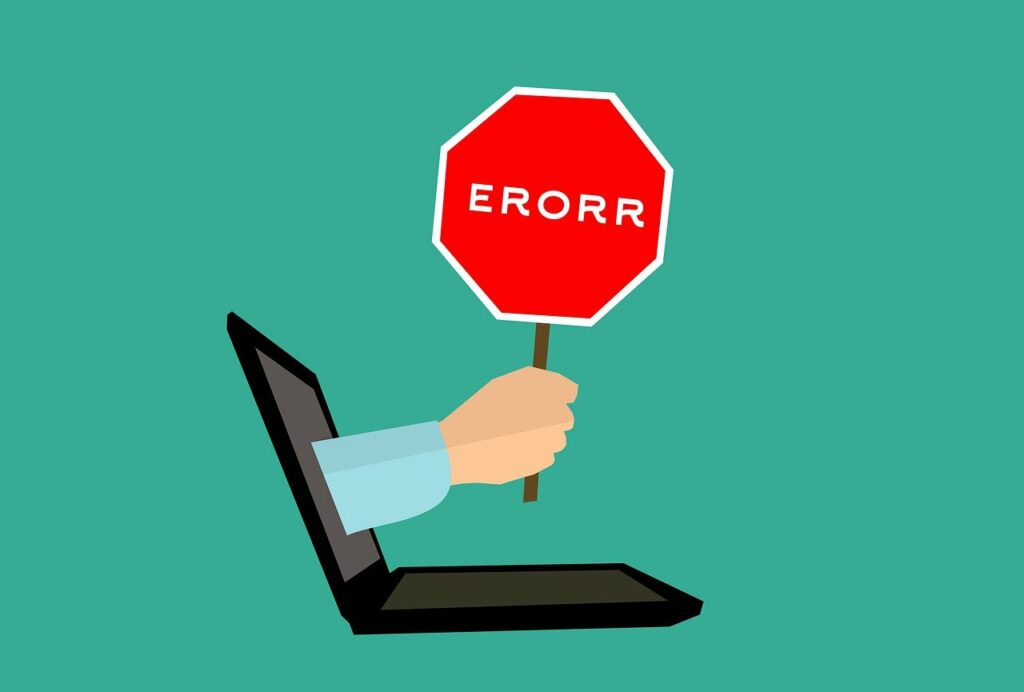As a business owner or marketer, you may have encountered an error message while using Mailchimp, such as the “403 Forbidden” error. This error message can be frustrating and confusing, especially if you are not familiar with its meaning and how to fix it.
Unlike websites, e-mail lists are not exempt from the potential of receiving an email message that is deemed as ‘Forbidden’ – known as Mailchimp’s 403 forbidden. For those unaware of what this means or how to rectify it; be assured that there are solutions available! This article will provide insight into both why such messages may appear and what should be done in response when they do – ensuring maximum conversion rates for your recipients!
What Is a Mailchimp’s 403 Forbidden Error?

The 403 Forbidden error indicates that the user’s request is not being granted. This can be due to a variety of reasons, including:
The email campaign you created may be misconfigured or non-existent. You must first evaluate your configuration before proceeding with further troubleshooting – as outlined in our blog post, “5 Steps to Creating a Successful Email Campaign Using Mailchimp”.
One common issue with user permissions is that recipients may not have been granted access to the email addresses you are using. You can troubleshoot this by verifying whether the email addresses are correct and if they are, by checking to see if any of the recipient’s contacts have been added to your list. For more information on adding contacts, please read our blog post, “How to Add Contacts to Your Email Campaign Using Mailchimp”.
Common Causes of a Mailchimp’s 403 Forbidden Error

Occasionally, a user could experience this error while attempting to access or utilize an agency or firm’s email list. If you’re unsure whether this is the case for your account, check out some of these possible causes:
- Incorrect login credentials: If the user enters incorrect login credentials, Mailchimp may return a 403 error.
- Insufficient permissions: If the user does not have sufficient permissions to perform the requested action, Mailchimp will return a 403 error.
- IP address blocked: If the user’s IP address has been blocked by Mailchimp, they will not be able to access the resource and will receive a 403 error.
- Server-side issue: Sometimes, a 403 error can be due to a server-side issue in Mailchimp’s system. In such cases, the problem usually resolves on its own after a while.
How to Fix the Mailchimp’s 403 Forbidden Error

Fixing the Mailchimp’s 403 Forbidden error requires some troubleshooting and problem-solving skills. Here are some steps you can take to fix the error message:
Check your login credentials
Make sure you are entering the correct username and password combination. If you have forgotten your password, you can reset it using the “Forgot Password” option on the login page.
Verify your user role and permissions
If you are working on someone else’s account, make sure you have the necessary permissions to perform the action or access the feature you want. If not, ask the account owner to grant you the required permissions.
Clear your cache and cookies
Sometimes, the Mailchimp’s 403 Forbidden error can occur due to a cache or cookie issue. Clear your browser’s cache and cookies, and try accessing Mailchimp again.
Try a different browser
If clearing your cache and cookies does not work, try accessing Mailchimp using a different browser. Sometimes, browser extensions or settings can interfere with Mailchimp’s functionality.
Disable VPN or proxy
If you are using a VPN or proxy, disable it and try accessing Mailchimp again. VPNs and proxies can sometimes trigger IP address or location restrictions that result in the Mailchimp’s 403 Forbidden error.
Contact Mailchimp support
If none of the above steps work, contact Mailchimp support and provide them with details of the error message and the actions you were trying to perform. They will be able to investigate the issue and provide a solution.
Fixing the Forbidden Error with Spoofing or Password Expiration
If an app or website has issued your Mailchimp’s 403 forbidden error, there are two methods for resolving the issue: either resetting your password or spoofing the site. Spoofing involves using another email address to post on the system (such as one not currently associated with your account) to bypass any authentication requirements.
To rectify this issue, you can simply log into your email account and set up a new password; however, if this process is time-consuming or inconvenient, opting to spoof MailChimp’s domain may be more convenient!
Problems Caused by Unwanted Client Domains
If your domain is listed in the subscriber’s address, there could be a problem.
If a client purchases a list that includes several subdomains, you may find that their email addresses aren’t accessible to you.
Unwanted domains are akin to spam: they do not belong on a mailing list and can potentially cause subscribership rates to dip.
What to Do if Mailchimp Blocks Your Website
If your website is inaccessible to Mailchimp, you can do a couple of things. First off, check with your hosting provider; if the issue lies with them then it’s likely that an upgrade may be all that is required to solve the problem.
If external factors are at fault – such as the domain itself – then switching to a different system-level domain might rectify things.
Conclusion
When your website is forbidden, it can be a jolting experience. For example, when users attempt to access your page and receive an error message along with the page not being available – this is known as a ‘FORBIDDEN PAGE’.
There are a number of reasons why a site might be inaccessible, such as:
To avoid possible confusion and ambiguity, be sure to consult with your web designer or host provider if any questions arise about how to configure or customize your Mailchimp’s account in order to ensure that it remains functional.


[…] or services you’re offering. They may attempt to ask you product-related questions. Yet, running through an email program and writing a letter may seem like too much of a chore, and you may feel bored. A WordPress website […]